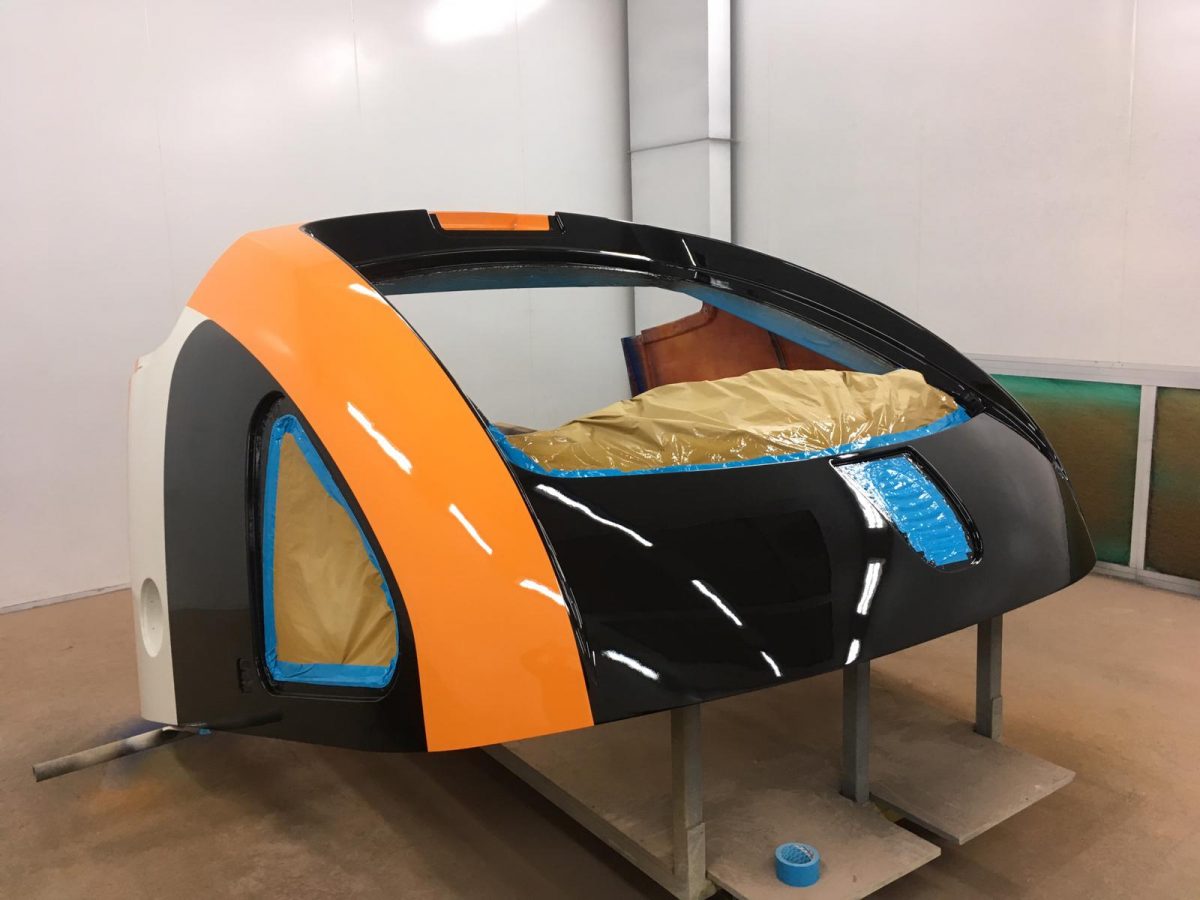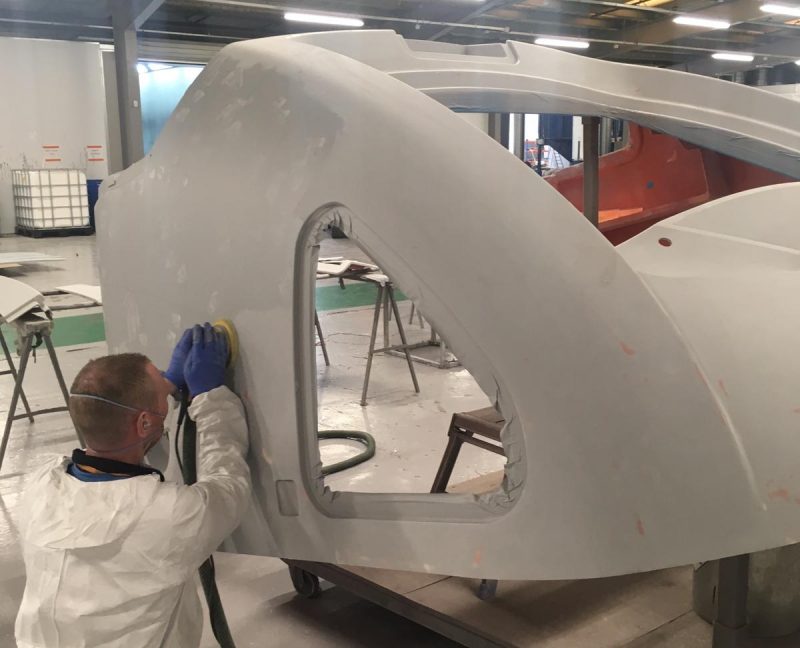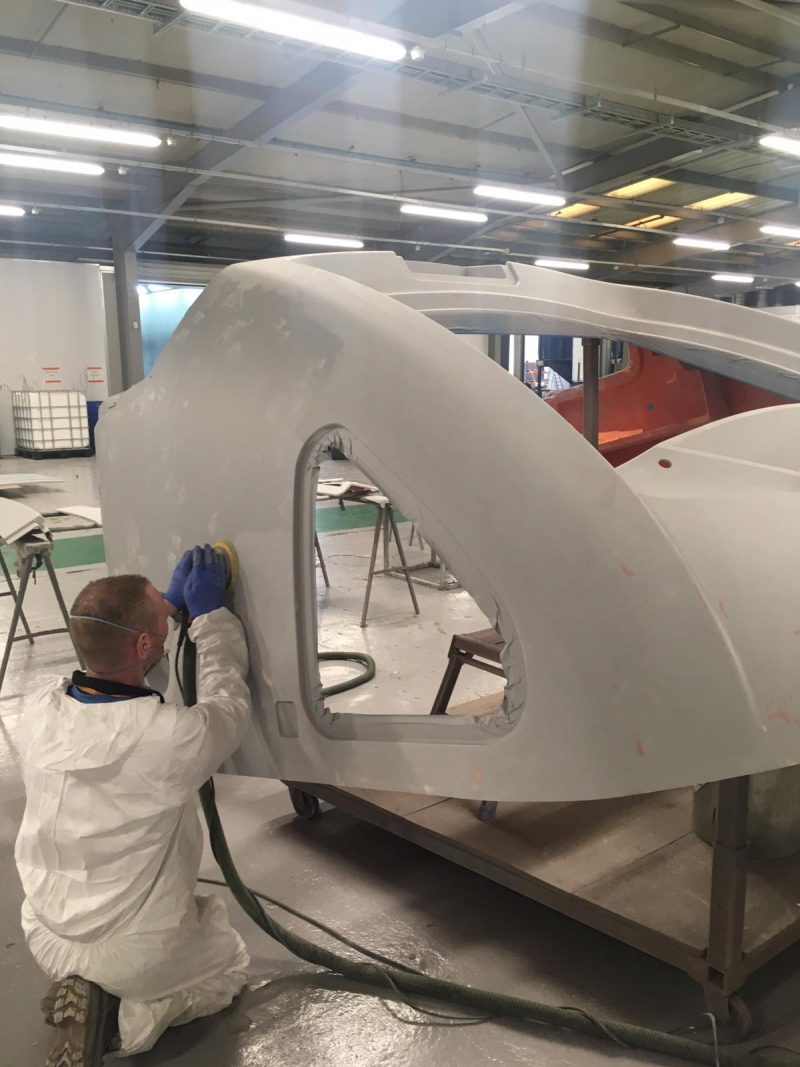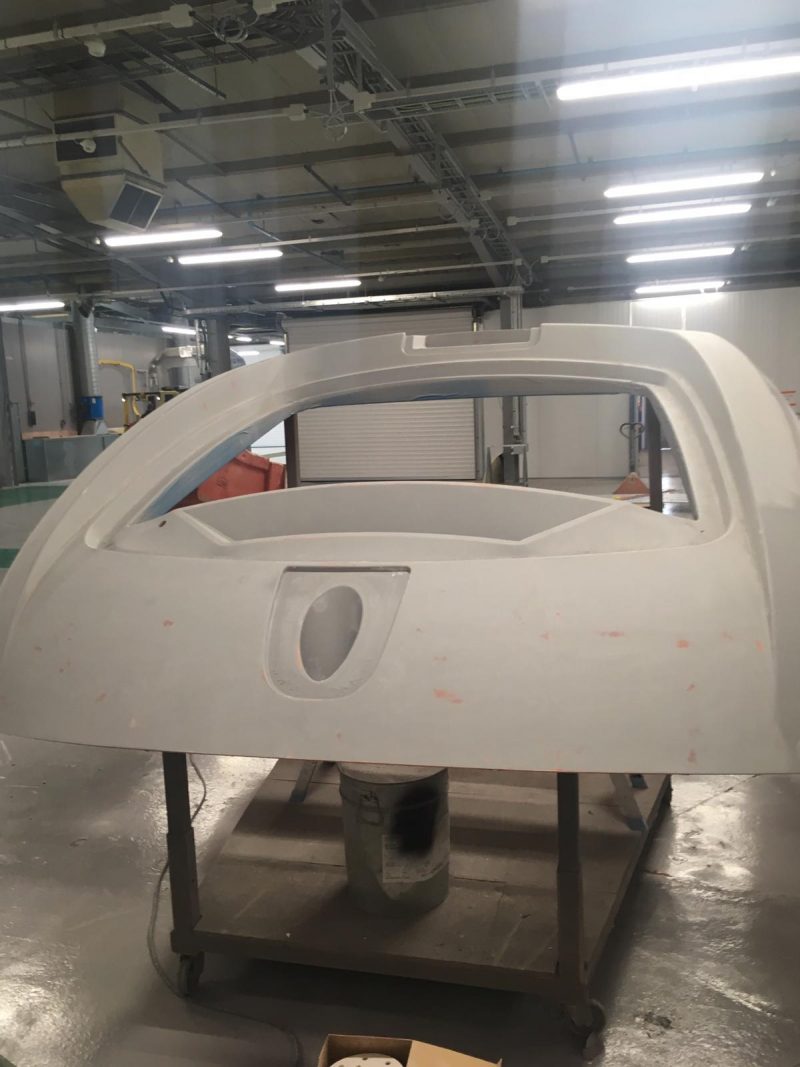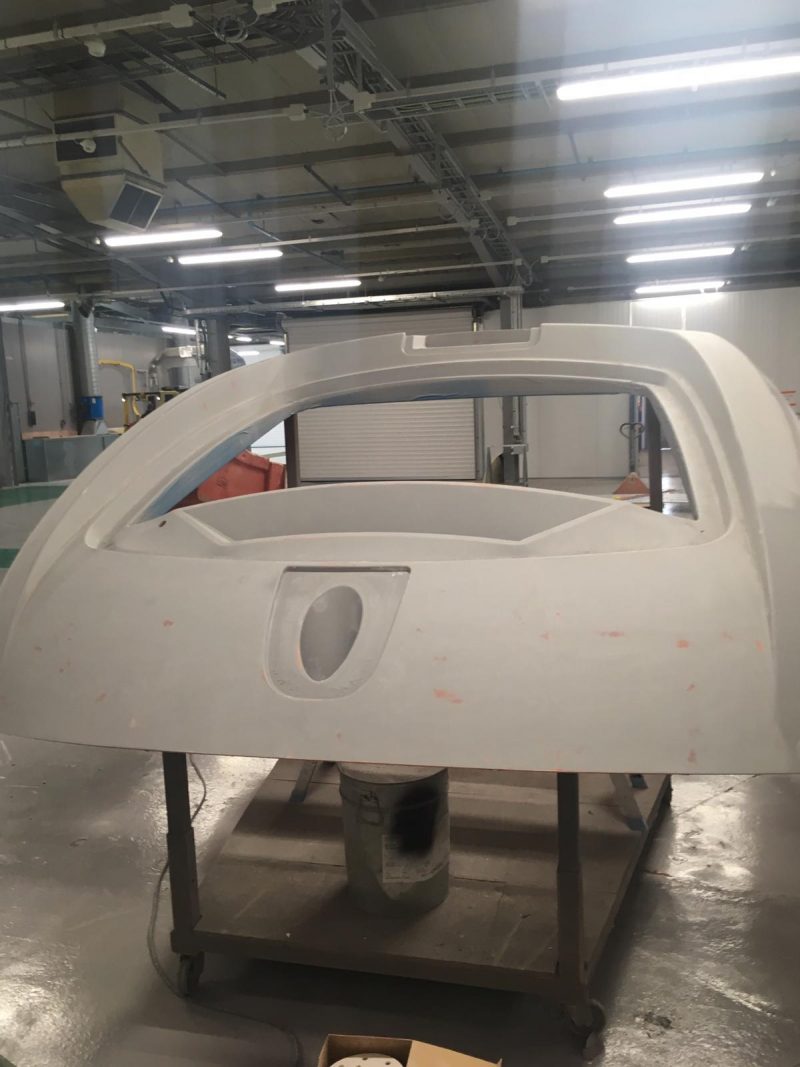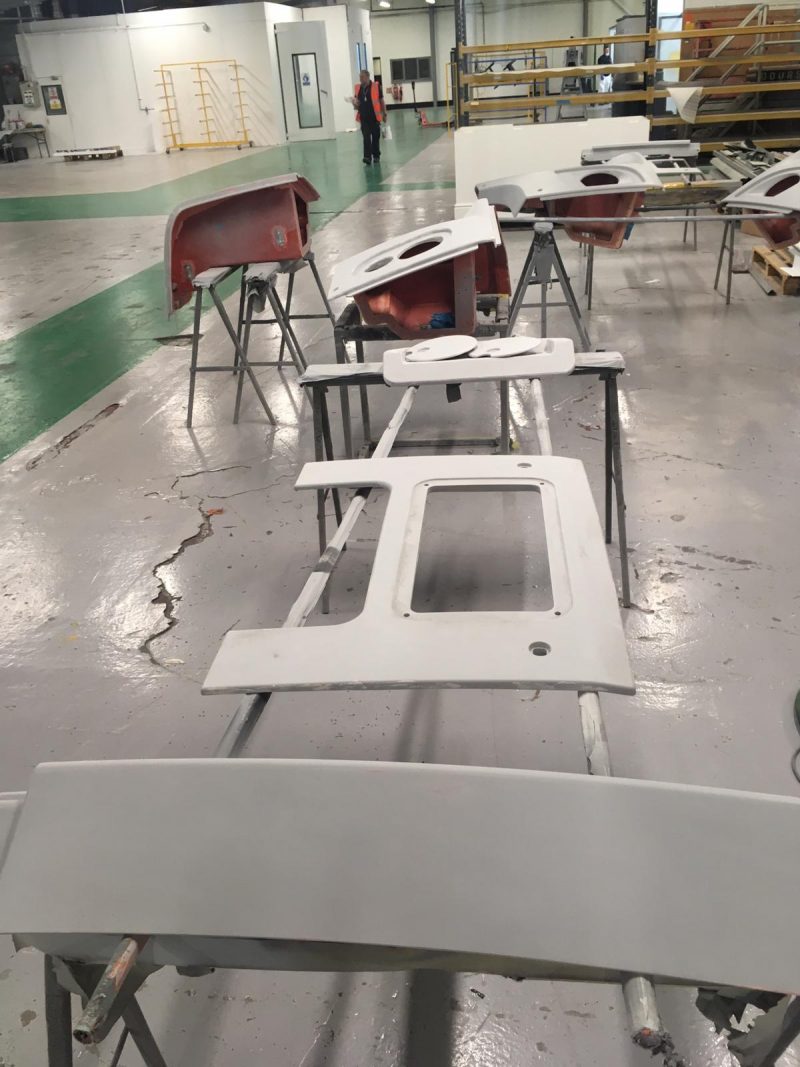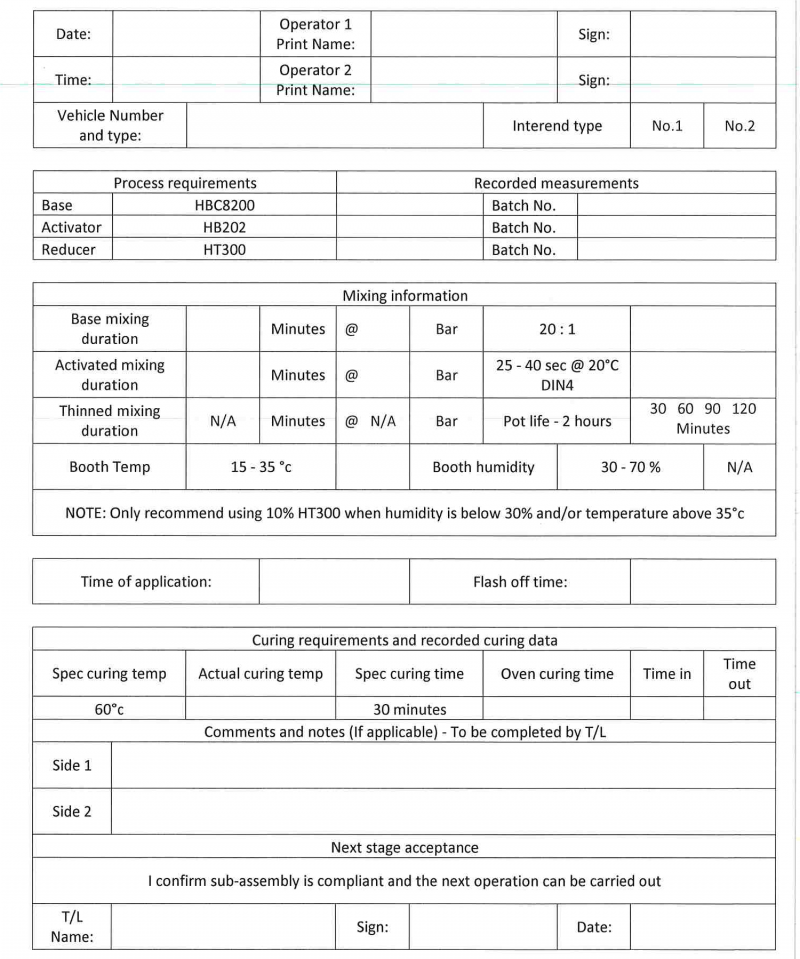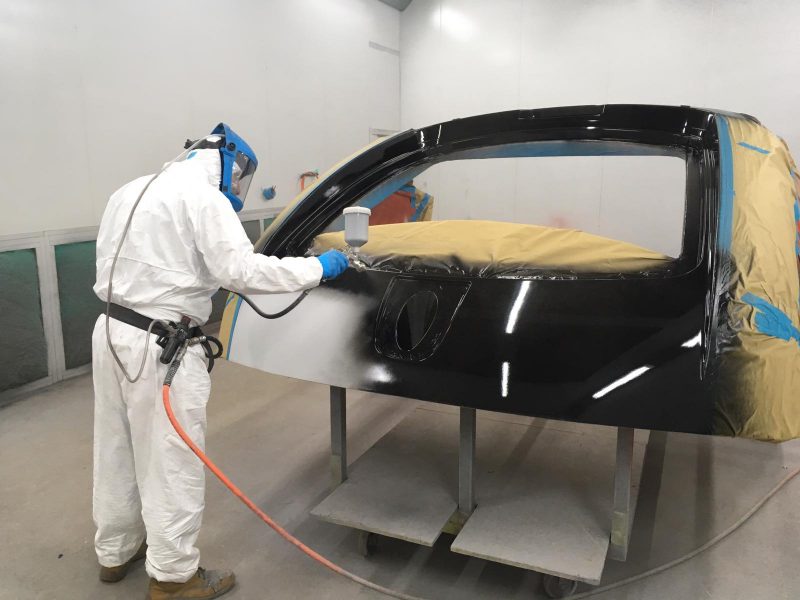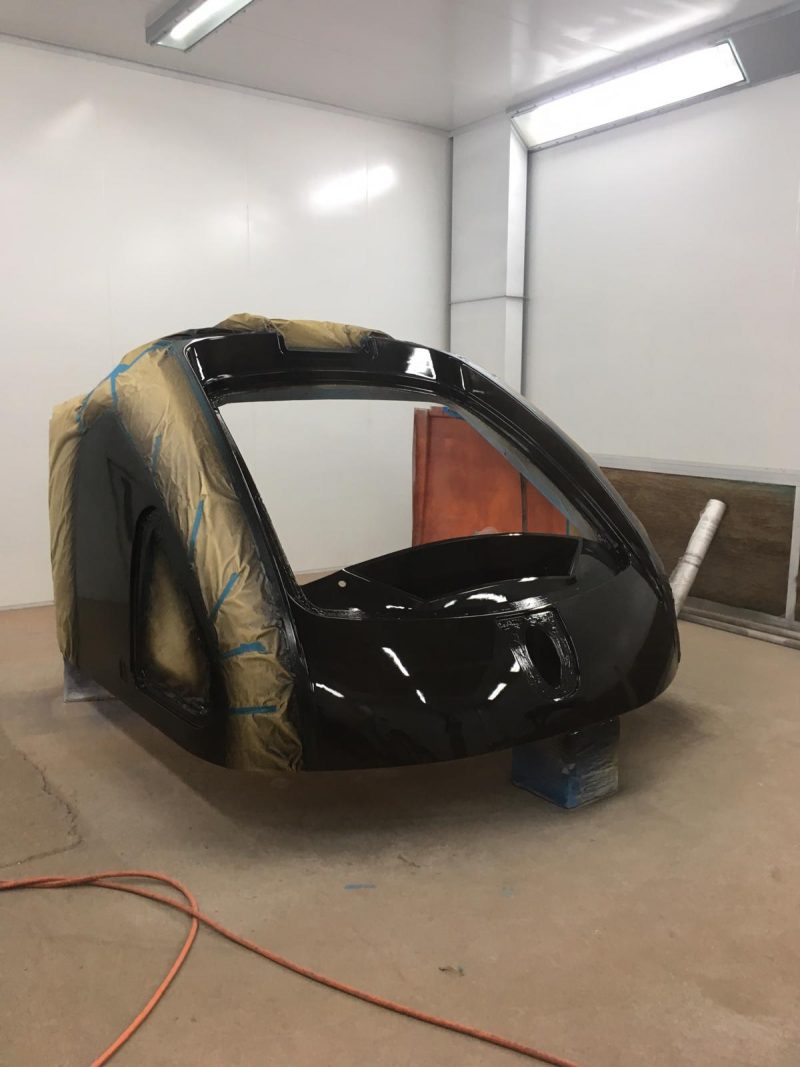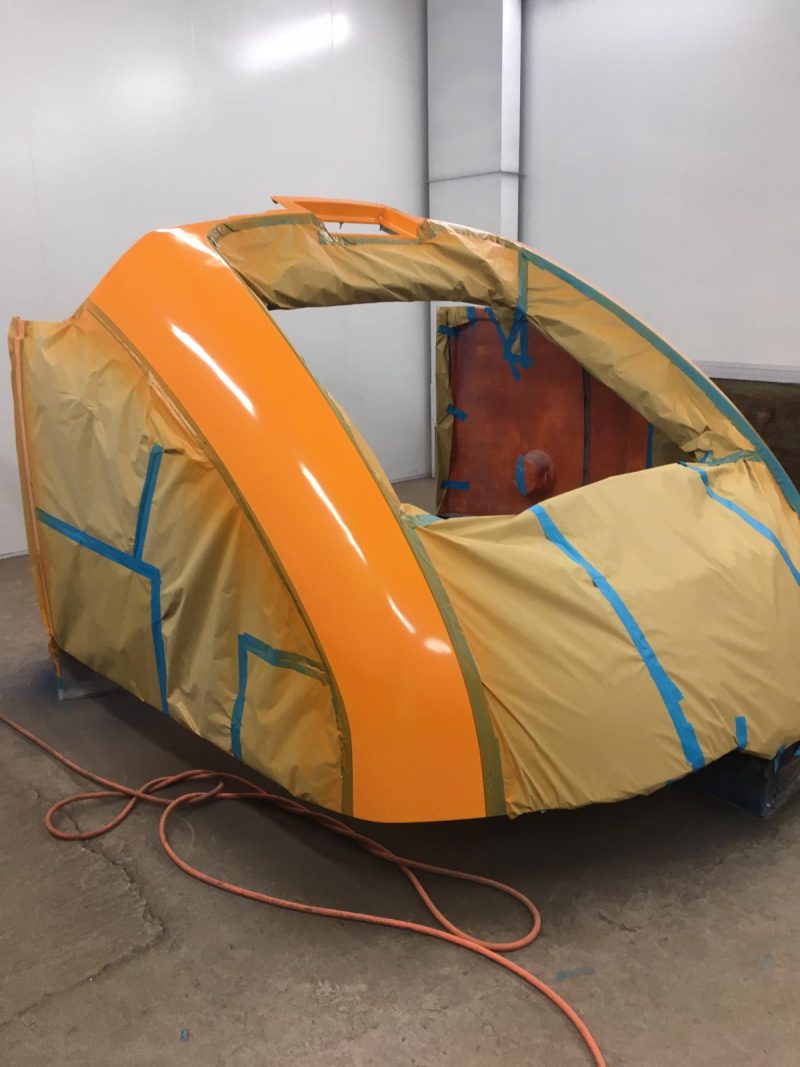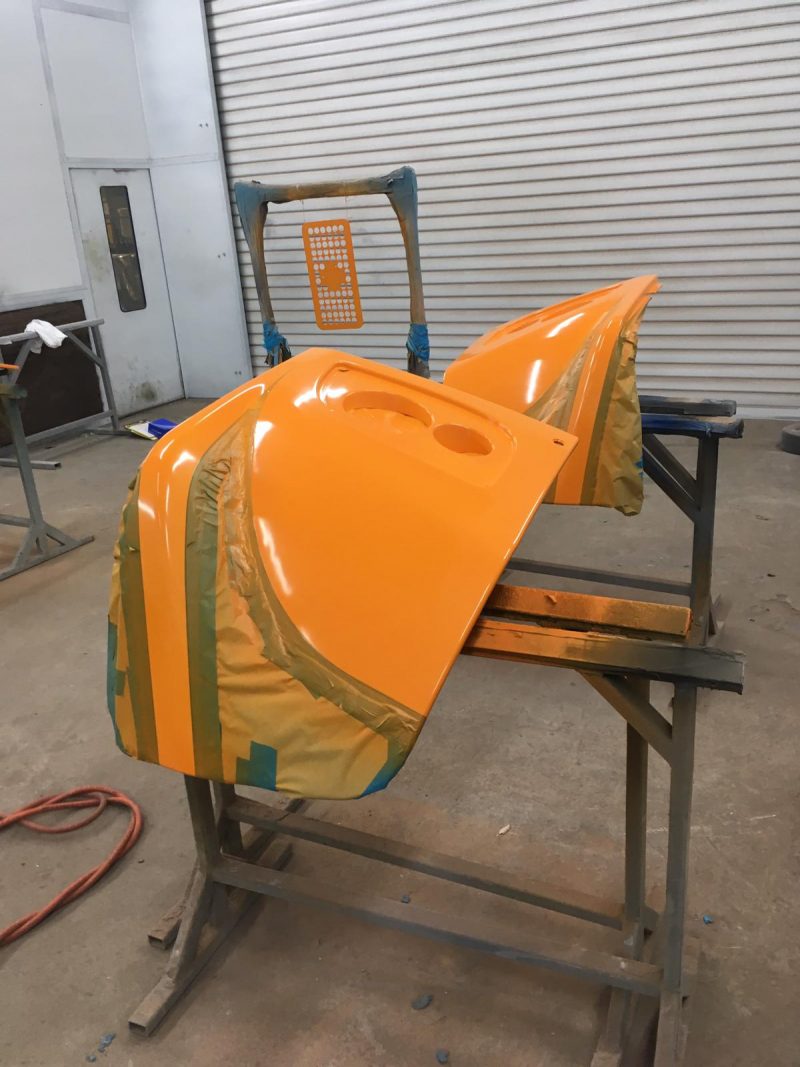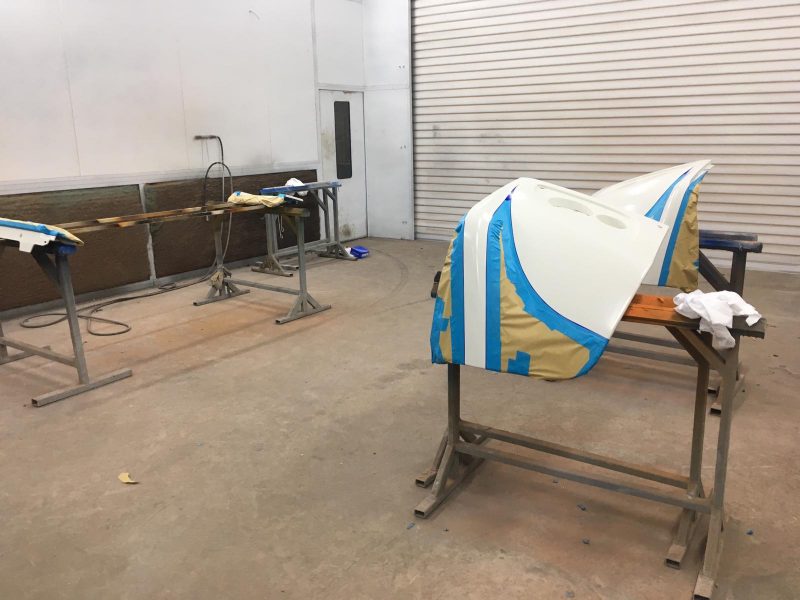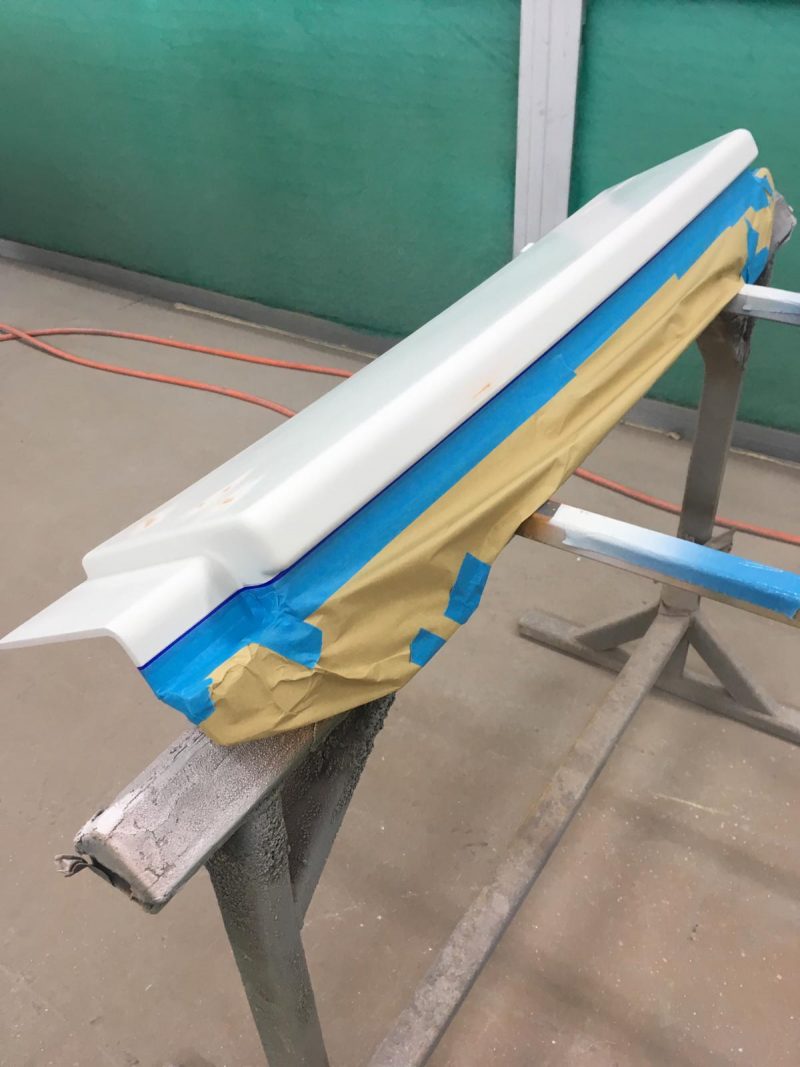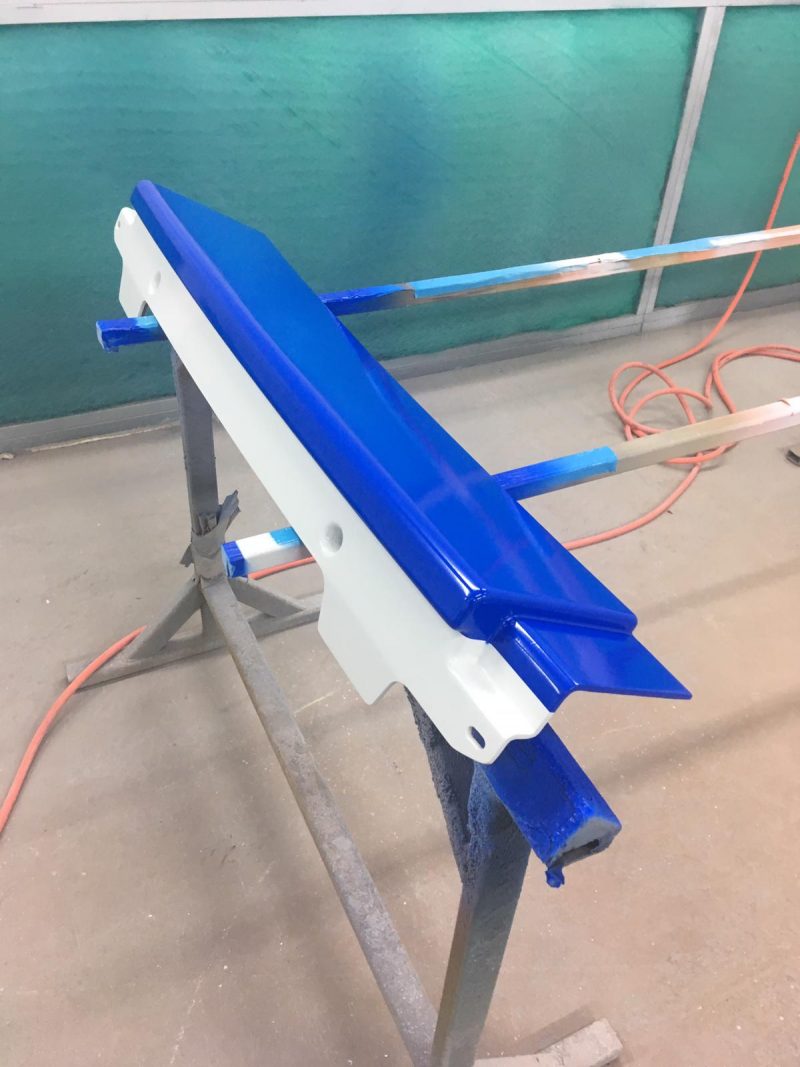Millenium Site Services specialise in rail vehicle paint repairs as well as new painting projects an example of one of their current contracts consists of the painting of train Cab’s for a leading train manufacturer in the midlands. Millenium Site Services have already completed 107 of this fleets cabs and are currently painting Cab number 108. Millenium Site Services highly skilled workforce can complete a cab from start to finish in as little as 48 hours this is one of the many reasons they are a leader in the painting industry.
Millenium Site Services have painted numerous rail vehicle components at their headquarters in Derby right through to full train sets over ¼ mile long on site at the clients location. Over the past 20 years Millenium Site Services have built up an envious portfolio and are proud to be well known through out the transport and rail industry for providing a very high quality and efficient painting service. The experience gained over the years and project success’s makes Millenium Site Services a key supplier to the rail industry.
Below is a short case study on how Millenium site services process a cab.
Stage 1 – Inspection, Preparation and primer
The first process is always a full inspection to gauge what preparation work is required, our ICorr qualified inspectors look for things like uneven surfaces, pin holes and joints etc. These areas are marked up and recorded ready for the preparation team. The whole cab will be prepared ready for priming by filling the required areas and sanding smooth. The primer coat is then applied providing the perfect adhesion for paint.
Stage 2 – Base coat (white)
The Cab and all of its associated components are manoeuvred into one of their fourteen, 22 meter long spray booths. A white base coat is then applied by gravity fed professional guns with specific sizing for the particular paint specification. All the other coats applied further down the process will sit on this base coat.
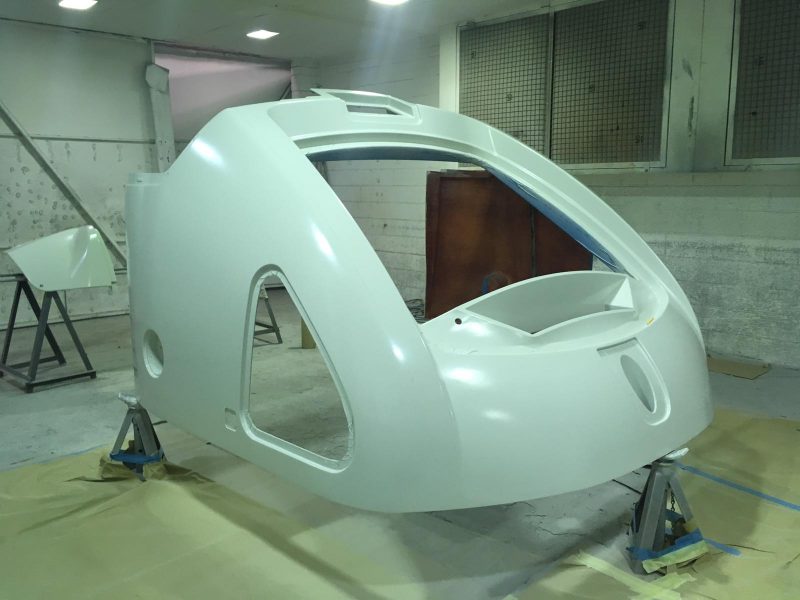
Stage 3 – Mask and apply second colour (black)
The next task is to then line and mask the cab using the approved laser cut paint masks for livery lines and apply the black coat. The painter is looking for an even coat whilst keeping the whole surface “wet” only highly skilled painters can achieve this perfect finish. The painter is also ensuring he is applying the correct amount of paint required in order to achieve the depth of colour and specified DFT (dry film thickness). All these measurements are then recorded down on the CHB (Car history book) along with paint batch numbers providing full traceability.
Stage 4 – Demask
Before removing the lining tape and masking the paint work needs to be baked. The lining tape and masking is removed leaving the white and black colours, these are called livery paint split lines.
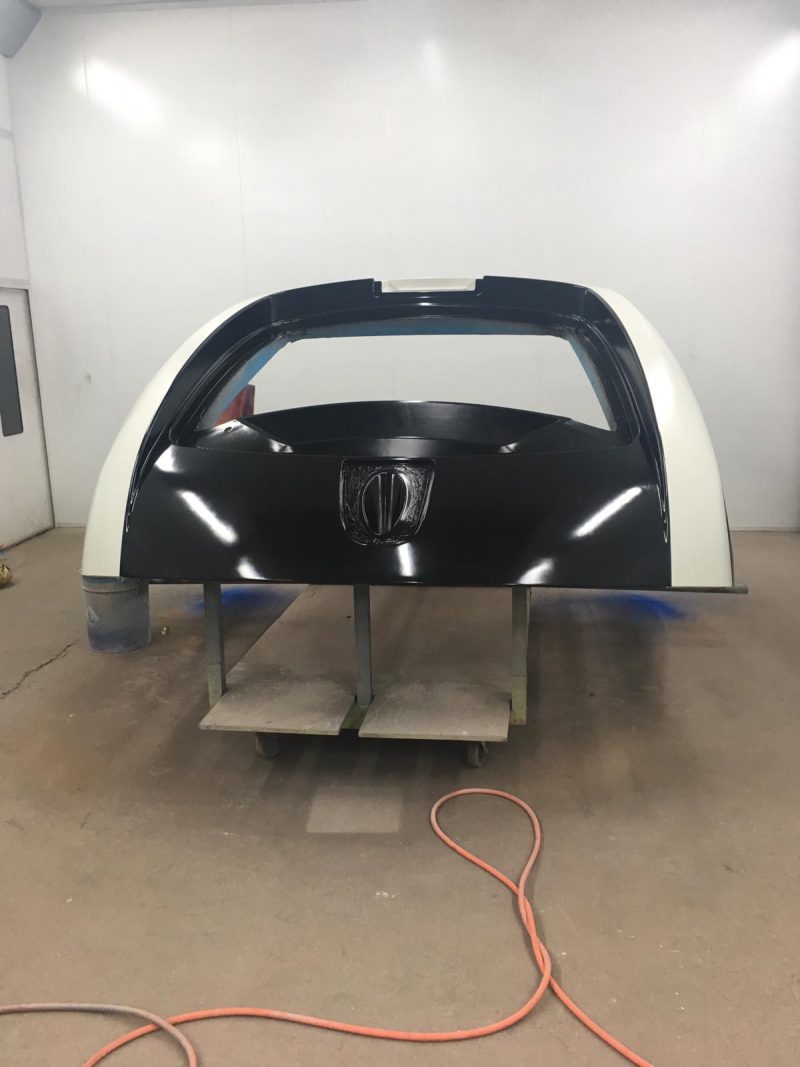
Stage 5 – Mask and apply third colour (orange)
The required areas are masked to protect the previously applied colours, again using the approved laser cut paint masks for livery. The orange is now ready to be applied, many coats are required to achieve the correct depth of orange. The paintwork is again baked and demasked.
Stage 6 – Mask and apply forth colour (blue)
The components and cab are masked using the laser cut paint masks for livery and the blue coat is applied.
Stage 7 – Paint destination board (black)
20% gloss black is applied to the destination board area of the cab, this is to minimise glare when the train is on its tracks.
Stage 8 – Inspection and lacquer coat
The cab and all of its associated components are inspected by their in house ICorr inspector at the end of every stage and all details are recorded in the CHB. Before undergoing the lacquer coat the cab is fully inspected as this is the last point that the paintwork can be reworked without having to go right back to the substrate. Once all inspections have been completed, the final stage is authorised. The two lacquer coats are then applied to the whole surface protecting the paintwork underneath. The painter needs to achieve a high lustre and must meet the minimum gloss level specification. The cab and all of its associated components will then be baked and where necessary flat & polished, the cab and all of its components can now be fully demasked.
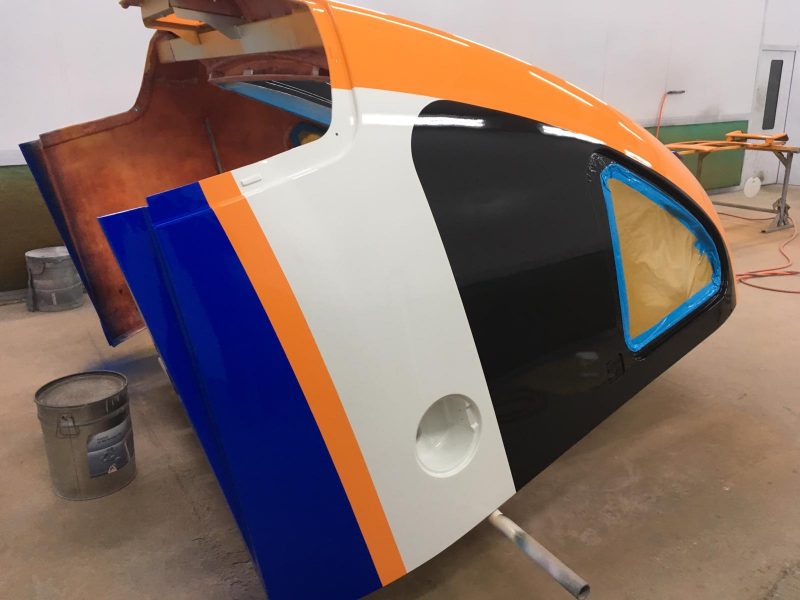
Stage 9 – Completed Cab
The CHB will be reviewed for final sign off, the cab is now ready to be fitted with all of is components/furniture.

There have been many improvements in Millenium Site Services process and facilities over the years which allows Millenium Site Services to turn around complex items such as this Cab in as little as 48 hours. Just imagine how many cabs Millenium Site Services can process in 7 days, working 24 hours a day with a workforce of over 160 people and 14 spray booths each capable of holding 6 Cabs………
Millenium Site Services keeping your business on track, on time and on budget!

